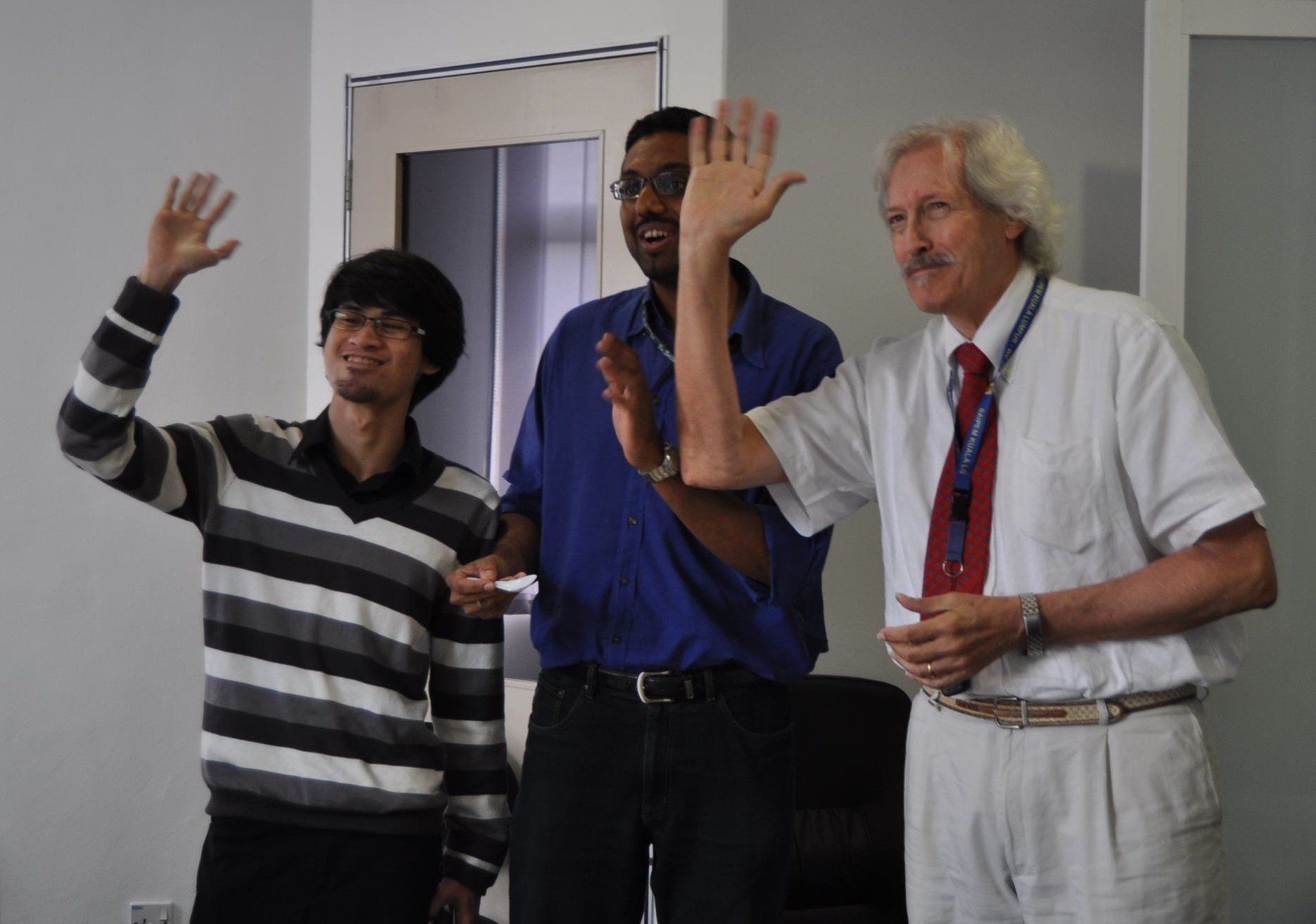Managing Employees’ Emotions In Cultural Shift

Managing people first can help smoothen the transition or change initiatives
The most difficult component of an organisation to manage is its people. Many change initiatives have failed because companies underestimated how critically the human factor can determine success or failure during a time of change. After weather, people are the most unpredictable element!
In my involvement of doing cultural change initiatives, the people element is the most crucial factor to pay attention to. You must ensure they feel good and secure when you announce your new initiatives. They must be enticed to agree that management are doing things with them.
If your organisations is planning to undergo a cultural shift, whether in a form of merger and acquisition (M&A), business process re-engineering, cultural transformation or any form of change, businesses must then have strategies to manage employee engagement during these changes.
Such initiatives involve complex and multi-layered planning. In my experience, it is always easier to manage changes that are tangibly measurable, such as learning to operate a new machinery, IT system or production processes.
What is employee engagement?
Employee engagement is the emotional commitment employees feel towards their organisation and the actions they take to ensure the organisation’s success; engaged employees demonstrate care, dedication, enthusiasm, accountability and a result focus.
Since human beings are emotionally self-serving, they need to be emotionally connected to how they can personally succeed “through” the organisation they work in. Putting their trust in leaders whom they believe can bring them success, play the fundamental emotion in their hearts.

Source: Gallup Survey (2011 – 2012)
Based on a survey by Gallup (2011 – 2012) on worldwide employees’ engagement, it is shocking to see only 13% of employees are engaged! Worldwide, about 63% of employees are not engaged while 24% are actively disengaged.
In summary
Actively disengaged employees outnumbered engaged employees nearly two to one.
Engaged employees work with passion and feel an emotional connection to their company. They drive innovation and move the organisation forward. They are characterised as being loyal, committed and productive, and they deliver results.
Unengaged employees come to work and do what is asked of them but have little energy or passion for their work. They feel no meaningful attachment to their job or company. They can easily be tempted by job vacancies elsewhere.
Actively disengaged employees are not just unhappy at work; they actively show their unhappiness. These employees demonstrate negative, uncooperative and sometimes hostile behaviours and attitude. They undermine their teams and company business.
The above statistics and findings prove that not managing employee engagement during a cultural change initiative will guarantee the failure of the transition.
Eight emotional drives
In Directive Communication Psychology, an area of psychology developed by Arthur Carmazzi, humans are motivated by eight emotional drives. They are:
- Love and Belonging – Connection from being with others, or with self
- Security and Control – To maintain security and control in our lives
- Diversity and Change – Having a variety and excitement in our lives
- Recognition and Significance – Acknowledging of our virtues and achievements, being noticed
- Achievement – The need to make progress in our plans, to finish things
- Challenge and Growth – Learning, growing and personal development
- Excellence – Self-satisfaction and pride in the things we do
- Responsibility and Contribution – The need to contribute to others
Each of these is based on a human psycho-emotional need. While each of these drivers is present in everyone, they do not have equal importance for every individual and are achieved in different ways by different individuals. Also, every individual has a different order of importance for these eight drivers.
We are constantly responding to these drivers – sometimes in positive ways and sometimes in neutral and negative ways. The order of priority for these drivers within us can change with time, based on our environment, experiences, and especially traumas. These drivers can also be cultivated, either positively or negatively, by our environment, culture, parents, teachers and peers.
By understanding the eight emotional drives, we can analyse human behaviours such as why some people are motivated and don’t mind going the extra mile whereas some are calculative and will only do things if they know they can get something in return, and others are just not bothered.
Let’s take a case where a person is highly engaged. We assume his top three emotional drives are Challenge and Growth; Diversity and Change; and Achievement. His current job requires him to expand a new market for a product he is selling. He will find it exciting because he gets to travel and explore new areas. Being an achiever, he will strive to achieve targets.
On the contrary, if this person is put in an environment where there is no learning and his work is routine, he will feel bored and probably end up being a mediocre performer. Over time, his motivation level drops and he becomes disengaged.
Engagement will happen when the environment supports the emotional needs the person is looking to meet. Whether at work or at home, every individual will look for emotional fulfillment through their actions and behaviour. Being uncooperative or disagreeing can also be a way to fulfil an emotional drive. From that person’s perspective, he feels like he has achieved or has been recognised, albeit in negative ways.
People who are not engaged or actively disengaged therefore behave in a negative manner to satisfy their needs. Under normal circumstances, their actions and behaviours will not support the change or the direction the company is aiming for.
In our process of facilitating culture change, we identify the positive and negative key influencers within an organisation. Both are equally powerful and can play the leading role in either supporting or preventing change.
We work with the positive influencers to multiply the engagement effect. For the negative influencers, we assess whether the problem stems from a matter of attitude or skill. If it stems from attitude, we analyse their emotional drivers to find the root of the mismatch that leads towards the negative influence. If it is a skills issue, wherein the individual does not know how to manage or deal with certain matters, this is treatable by breaking the relevant psychological barriers and providing the right emotional support and guidance.
We believe in the power of positive multiplication wherein the right dynamics increases engagement over time. A small positive action can lead to a similar reaction and spark a bigger reaction and so forth. At the same time, the chain action and reaction will require good leadership role modeling to support the effect.
There are, however, cases where the negative key influencers are beyond rehabilitation. If termination is not an option, we recommend assigning them to isolated roles that minimise interaction with co-workers to keep such individuals from negatively affecting others.
The application of Directive Communication Psychology to manage organisational change may sound complicated. Once you embark on it, however, you see how it is about being conscious and raising awareness of how you affect others within the group and how others affect you through team dynamics. Ultimately, if you are engaged, you will want to share and engage others too. That’s the start of change.
Directive communication psychology

As individuals affect and are affected by each other in specific work and personal environments or culture, Directive Communication Psychology establishes an awareness at the emotional and decision-making base, optimising the way people interact with each other in organisations, teams or groups.
Developed by Arthur Carmazzi, it enables individual to positively direct enthusiasm and action for themselves and the people around them. It exposes individual to the mental, emotional and physical triggers that will lead to improvement in their quality of life and out of work.
We recommend Directive Communication Psychology be used to improve employee engagement programme. The process encompasses:
- Understanding how every individual interprets their perspective of the world – how we genetically process information based on our brain make-up
- Understanding of individual encoded assumptions and rules of engagement – to determine why we act, react or don’t act
- Understanding of human emotional drivers – why we do what we need to do
- Understanding of group dynamics and how you affect and are being affected by one another – how we do what need to do
Leadership
Tags: Emerging Leadership, Executing Leadership, HR, Alignment & Clarity





